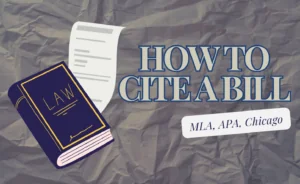We all sometimes stumble on what seems to be a perfect source for our research paper and only later discover there’s no author listed. Citing sources without an author can seem like a tricky situation, and it even may force some to refuse to use such material. But you really shouldn’t, since all popular citation styles have specific guidelines on this point. This guide will walk you through the steps for citing sources without an author in APA, MLA, and Chicago styles.

✅ AI Essay Writer ✅ AI Detector ✅ Plagchecker ✅ Paraphraser
✅ Summarizer ✅ Citation Generator
Citing a Source with No Author: What You Need to Know
So, you’ve got a source and there’s no author in sight? When you’re looking to cite something without an author’s name attached, the game plan changes a bit. Instead of starting with the author’s last name (because, well, you can’t), you’ll kick things off with the title of whatever you’re citing. Whether it’s a great article, a chapter from a book that changed your life, or a webpage that has just what you needed, the title’s your new best friend here.
The main point is that you make the title the star of the show when using a free citation machine generator. After that, you still follow the usual steps like adding the publication date and where you found it, like a URL for online stuff. It’s all about giving props to the source even when you can’t shout out the author by name.
This way, anyone reading your work can still track down your sources and see where you’re coming from. Plus, it keeps your work tidy and on point. So, remember: title takes the lead, add in the deets like when it was published and where you found it, and you’re golden.
 How to Cite a Source with No Author in APA
How to Cite a Source with No Author in APA
APA style usually loves its authors. But when there’s no author to be found, you’ll start your reference entry with the title of the source. For instance, if you’re citing an article titled “Ten Ways to Improve Your Guitar Playing Skills,” you’d begin with the title in italics, followed by the date of publication in parentheses. Next up, add the source or the DOI (Digital Object Identifier). So, your citation would look something like this:
“Ten Ways to Improve Your Guitar Playing Skills” (2023). Retrieved from http://www.playfine.com
Pretty straightforward, isn’t it? Just make sure to use the source title in your in-text citations too, but you can shorten it if it’s longer than a few words .
 How to Cite a Source with No Author in MLA
How to Cite a Source with No Author in MLA
Moving on to MLA style, things are somewhat similar but with their own twist. Again, you’ll kick things off with the title of the source. If you’re citing a book, article, or webpage, place the title in quotation marks if it’s a shorter work (like an article) or italicize it if it’s longer (like a book or a complete website). The rest of the entry will follow the usual format: title, title of the container, other contributors, version, number, publisher, publication date, and location (such as a URL or page numbers). Here’s an example:
“Ten Ways to Improve Your Guitar Playing Skills.” Writing Wonders, 7 June 2023, www.playfine.com.
⚠️ Note the use of a period after the title and the container title being italicized.
 How to Cite a Source with No Author in Chicago
How to Cite a Source with No Author in Chicago
Like APA and MLA, you’ll start with the title. But here’s where it gets a bit different: you’ll also need to include the date of publication right after the title, then the URL or the name of the database. It’s a bit like mixing APA and MLA together but with a Chicago twist. Here’s how it looks:
“Ten Ways to Improve Your Guitar Playing Skills.” June 7, 2023. http://www.example.com.
⚠️ Chicago style keeps it neat and to the point. Just remember, for bibliography entries, you’ll invert the date (year first), but for in-text citations, stick to the format shown above.
Remember, while citing sources without an author might initially seem hard, it’s just about following a different set of rules. Stick to these guidelines, and you’ll be able to reference like a pro. And who knows? Maybe you’ll even find a bit of joy in piecing together the perfect bibliography!
FAQ
Follow us on Reddit for more insights and updates.





Comments (0)
Welcome to A*Help comments!
We’re all about debate and discussion at A*Help.
We value the diverse opinions of users, so you may find points of view that you don’t agree with. And that’s cool. However, there are certain things we’re not OK with: attempts to manipulate our data in any way, for example, or the posting of discriminative, offensive, hateful, or disparaging material.